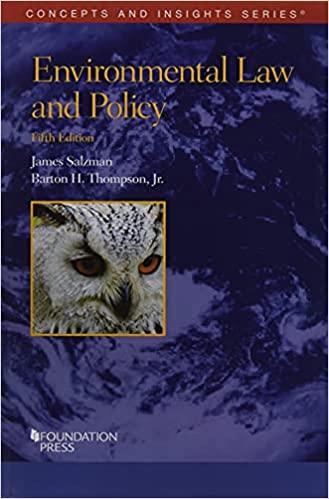Question
Campbell v. Lichtenfels This case concerns the aftermath of the dissolution of the parties' law practice. Following a hearing on January 2 and 3, 2007,
Campbell v. Lichtenfels
This case concerns the aftermath of the dissolution of the parties' law practice. Following a hearing on January 2 and 3, 2007, this court issued a memorandum of decision on January 5, 2007 granting the plaintiff a prejudgment remedy in the amount of $15,782.01. The plaintiff has now moved for reargument, contending that the court improperly considered as a setoff one-half of a malpractice settlement paid personally by the defendant, which sum the court found to be a debt of a partnership. [The defendant was sued for malpractice by a third party; he paid the entire claim personally and when the law firm dissolved, the plaintiff's share from the liquidated assets was reduced by one-half to account for the amount the defendant had paid.]
In support of his motion to reargue, the plaintiff relies on General Statutes Sec. 34-427(c) and, in that motion, italicizes those portions which he believes apply to his request for reargument. That section states (with emphasis as supplied in the plaintiff's motion) that:
a partner in a registered limited liability partnership is not liable directly or indirectly,including by way of indemnification, contribution or otherwise, for any debts, obligations and liabilities of or chargeableto the partnership or another partneror partners,whether arising incontract,tort, or otherwise, arising in the course of the partnership business while the partnership is a registered limited liability partnership. (emphasis in original)
While italicizing the phases that appear to suit his purposes, the plaintiff completely ignores the most important phrase: "a partner in a registered limited liability partnership." At the hearing, neither party presented any evidence at the hearing that tended to prove that the nature of the business relationship between the parties was that of a "registered limited liability partnership." To the contrary, the testimony presented at the hearing revealed that the parties had a general partnership in which they had orally agreed to share profits and losses equally and that they never signed a partnership agreement. There was certainly no testimony or tangible evidence to the effect that the partnership had filed "a certificate of limited liability partnership with the Secretary of the State, stating the name of the partnership, which shall conform to the requirements of [the statute]; the address of its principal office;...a brief statement of the business in which the partnership engages; any other matters the partnership may determine to include; and that the partnership therefore applies for status as a registered limited liability partnership." [Citation]
It is true that certain of the exhibits, such as copies of checks and letters written on the law firm letterhead, refer to the firm as "Campbell and Lichtenfels, LLP." These exhibits, however, were not offered for the purpose of establishing the partnership's character, and merely putting the initials "LLP" on checks and letterhead is not, in and of itself, proof of having met the statutory requirements for registration as a limited liability partnership. The key to establishing entitlement to the protections offered by [the limited liability partnership statute] is proof that the partnership has filed "a certificate of limited liability partnership with the Secretary of the State," and the plaintiff presented no such evidence to the court.
Because the evidence presented at the hearing does not support a claim that the nature of the relationship between the parties to this case was that of partners in a registered limited liability partnership, the provisions of [the limited liability partnership statute] do not apply. Rather, this partnership is governed by the provisions of [the Uniform Partnership Act] which states: "Except as otherwise provided...all partners are liable jointly and severally for all obligations of the partnership unless otherwise agreed by the claimant or provided by law." Because there has been no evidence that this partnership falls within [any exceptions] the court finds Campbell and Lichtenfels to have been a general partnership in which the plaintiff shares the liability for the malpractice claim, even if he was not the partner responsible for the alleged negligence that led to that claim.
The plaintiff correctly points out that reargument is appropriate when the court has "overlooked" a "...principle of law which would have a controlling effect..." on the outcome of the case at hand. [Citation] The principle of law now raised by the plaintiff was "overlooked" by the court at the time of the hearing for two good reasons. First, it was not brought to the court's attention at the time of the hearing. Second, and more importantly, the plaintiff presented no evidence that would have supported the claim that the principle of law in question, namely the provisions of [the limited liability partnership] was applicable to the facts of this case. Because the provisions of [that statute] are inapplicable, they are quite obviously not "controlling." The principle of law which does control this issue is found in [general partnership law] and that principle makes the plaintiff liable for his share of the malpractice settlement, as the court has previously found. The motion for reargument is therefore denied.
CASE QUESTIONS
- If the parties had been operating as a limited liability partnership, how would that have changed the result?
- Why did the court find that there was no limited liability partnership?
- How does general partnership law treat a debt by one partner incurred in the course of partnership business?
- Here, as in the case in Section 20.4.2 "Liability Issues in LLCs", there really is no inequitable result. Why is this true?
Step by Step Solution
There are 3 Steps involved in it
Step: 1

Get Instant Access to Expert-Tailored Solutions
See step-by-step solutions with expert insights and AI powered tools for academic success
Step: 2

Step: 3

Ace Your Homework with AI
Get the answers you need in no time with our AI-driven, step-by-step assistance
Get Started


